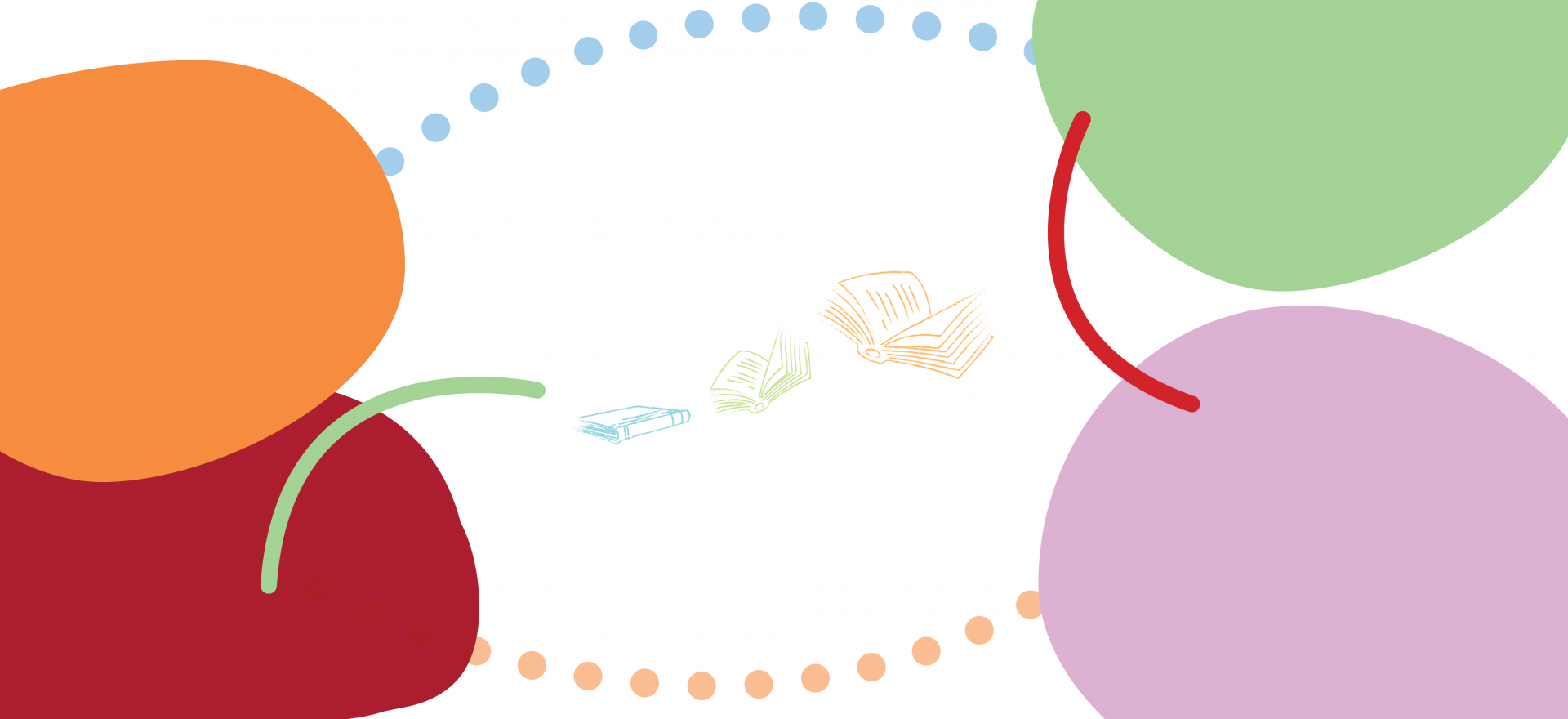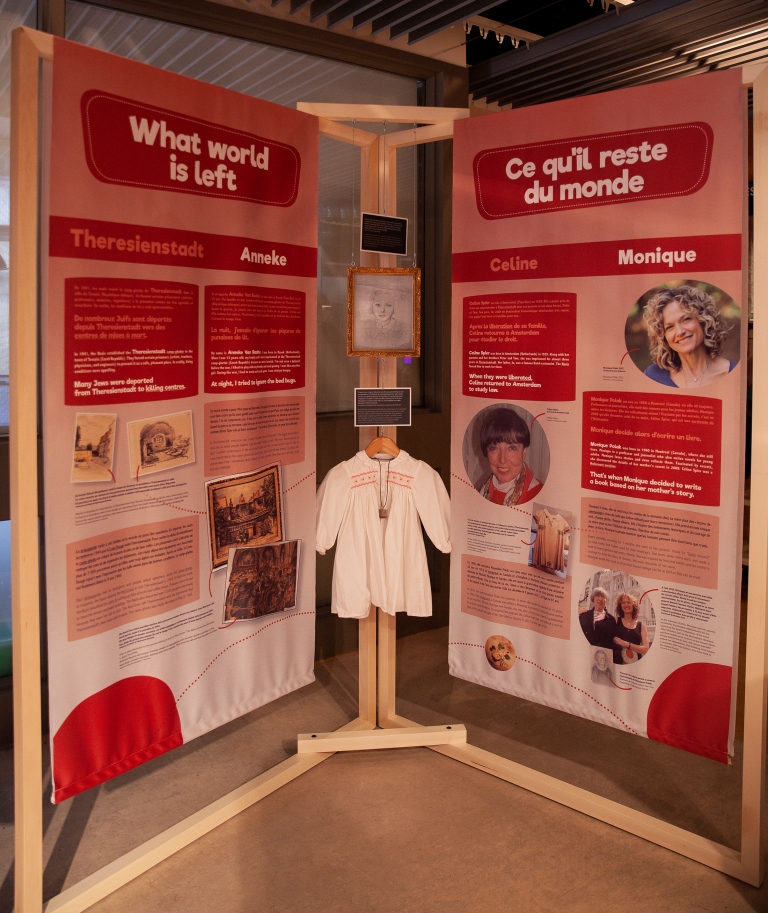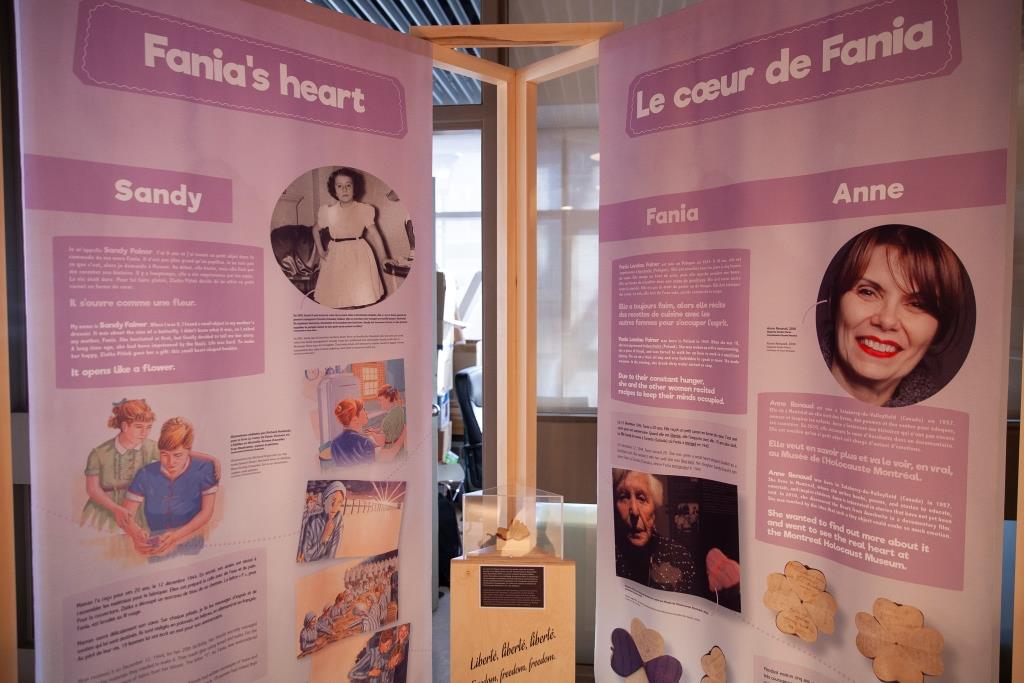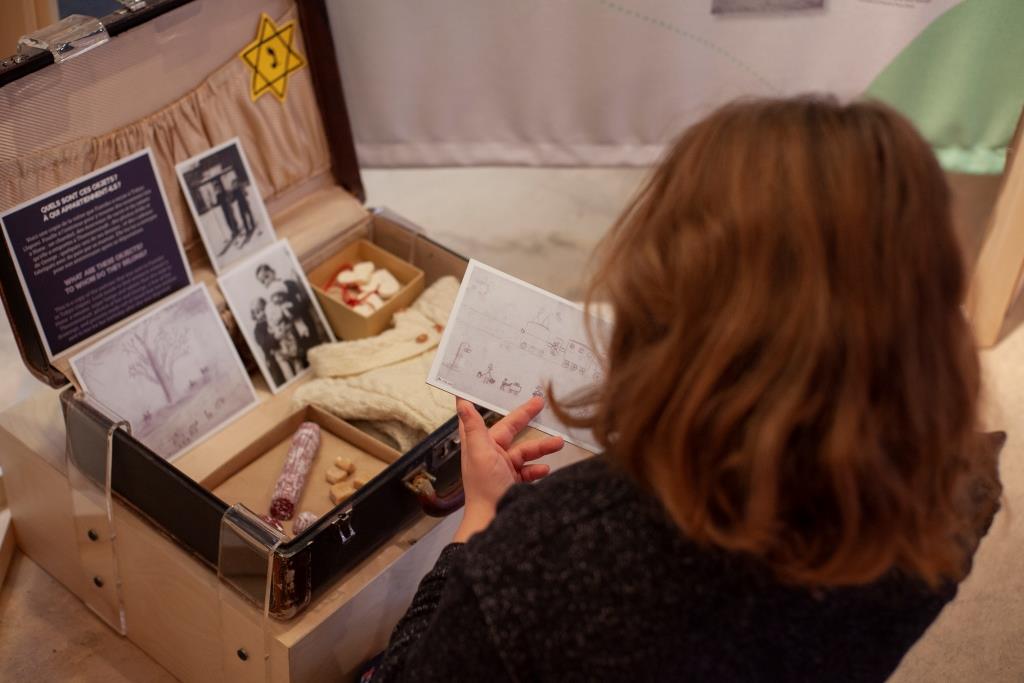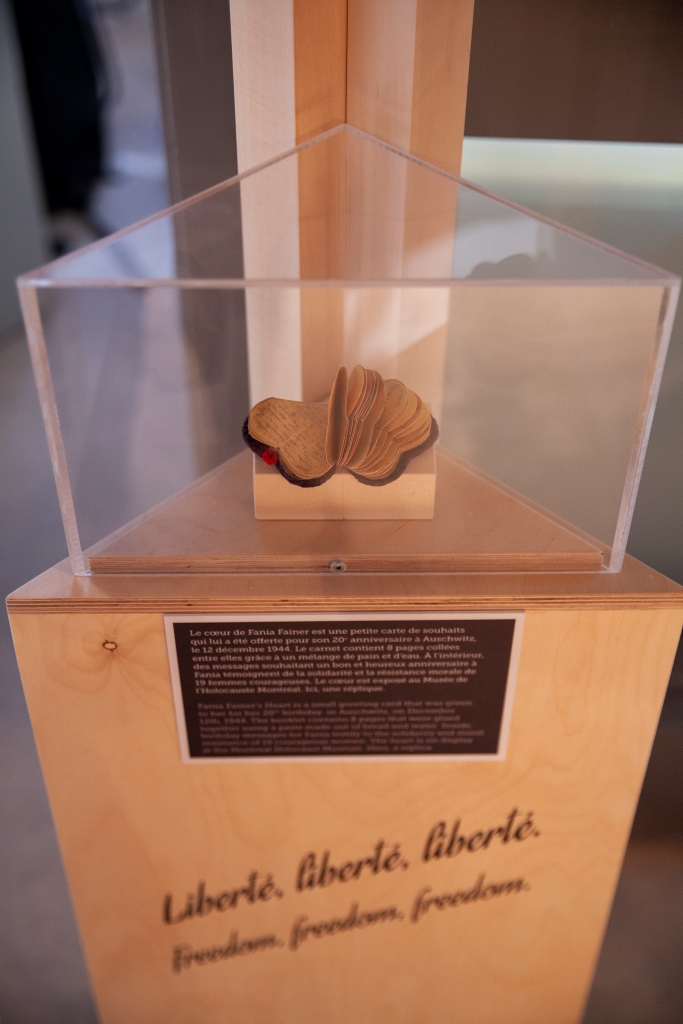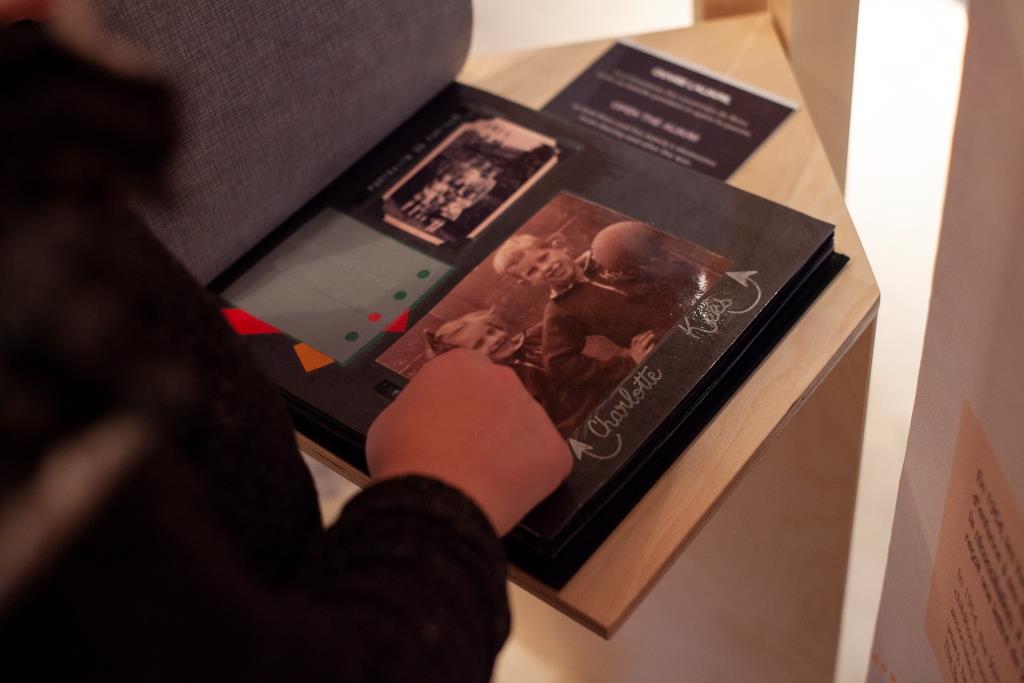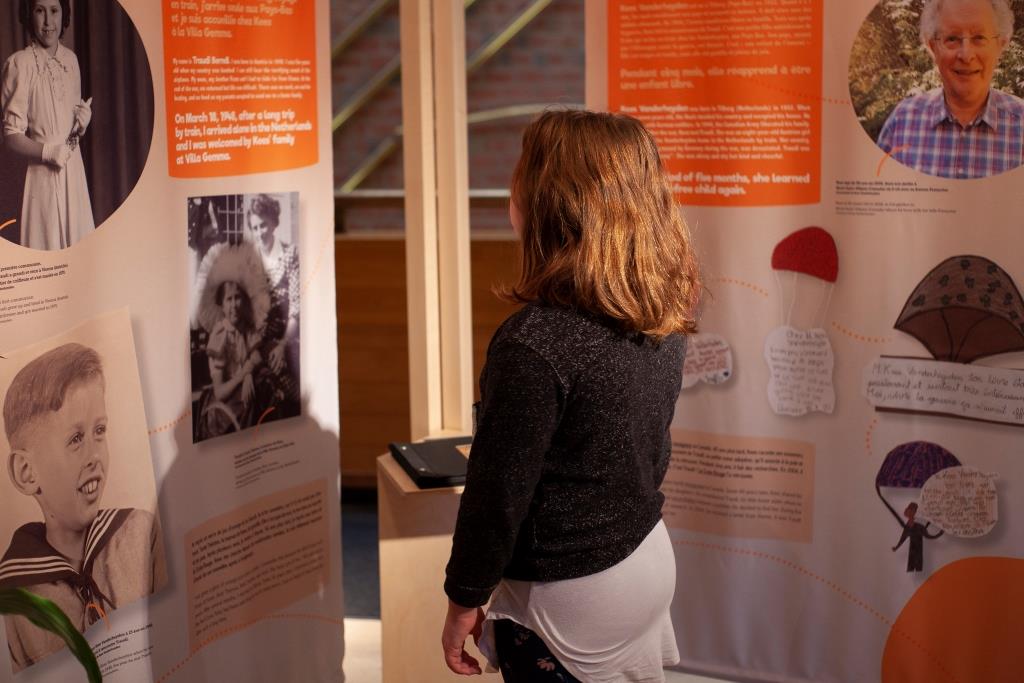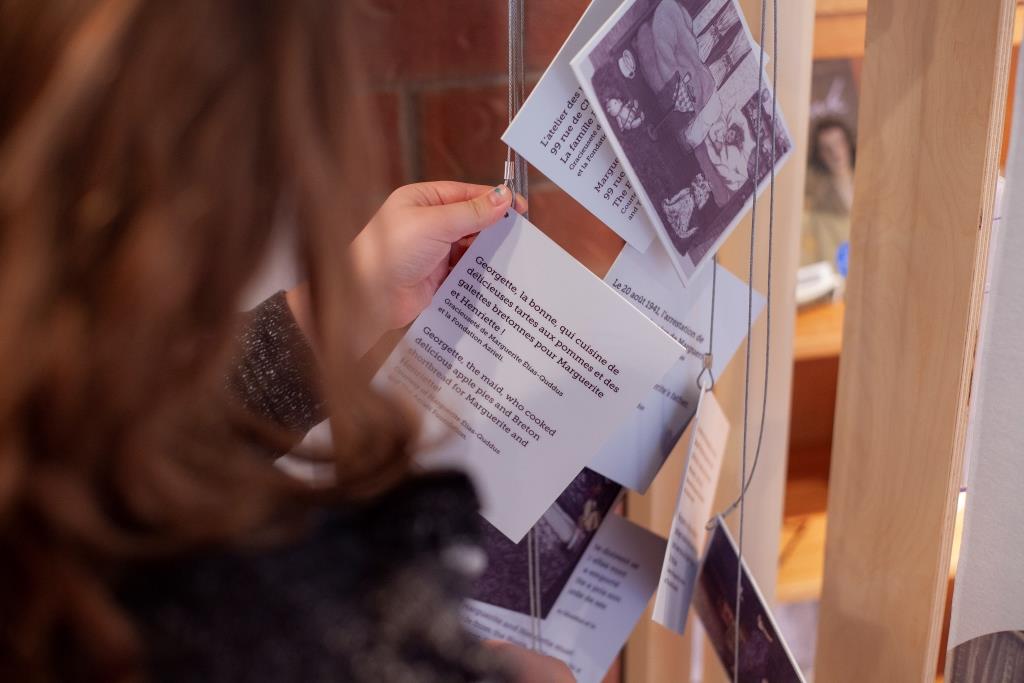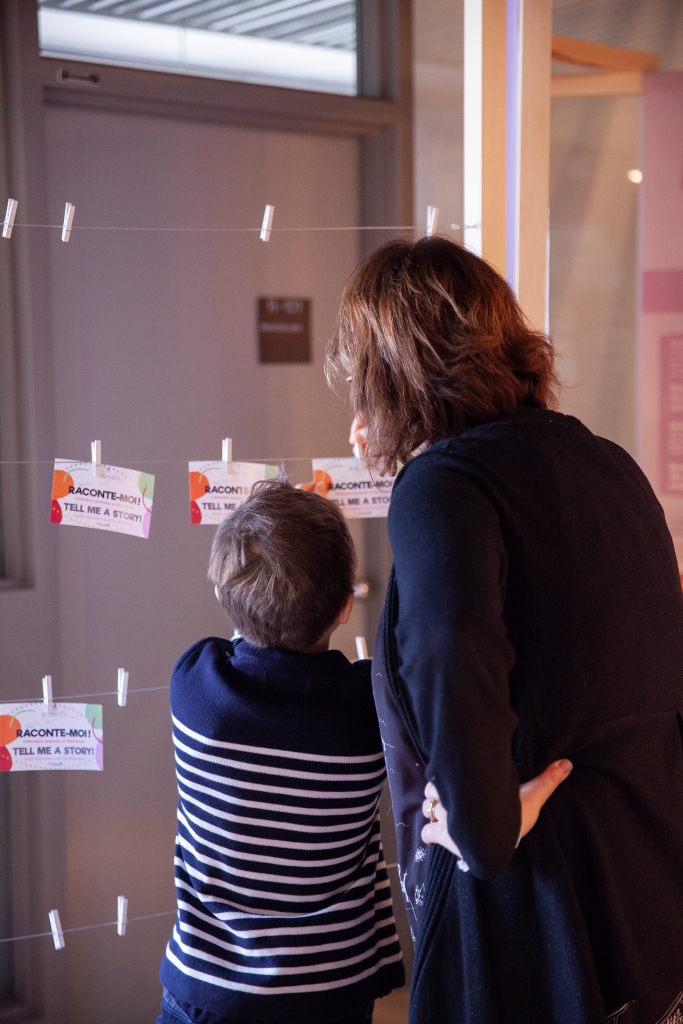Tell Me A Story! Youth Literature and the Holocaust is a travelling exhibition that introduces the history of the Holocaust and the Second World War to children eight years and older. Focusing on values and themes that are central to childhood, the exhibition is a starting point for raising awareness about the dangers of racism and antisemitism.
Exhibition produced by the Montreal Holocaust Museum and made possible in part by the Government of Canada.
Exhibition content
Tell Me A Story! Youth Literature and the Holocaust
The exhibition is divided into 7 sections and begins by introducing the Holocaust and the Second World War. Children’s experiences during the Holocaust then take center stage through the presentation of five works of youth literature that were inspired by the true stories of their characters.
- In Hiding (Azrieli Foundation), by Marguerite Élias-Quddus, a Holocaust survivor, is centered on the 3 years that Marguerite and her sister spent in hiding under false identities with numerous families in France during the Second World War.
- Hana’s Suitcase (Second Story Press), written by Karen Levine, tells the story of Hana Brady, a young Holocaust victim whose suitcase ends up in Tokyo at the Holocaust Education Centre, and Fumiko Ishioka, who tries to find out what happened to Hana.
- What World Is Left (Orca Publishing), by Montreal writer Monique Polak, is inspired by her mother’s experiences as a Jewish teenager imprisoned in Theresienstadt during the Holocaust.
- The Fresh Smell of Soap (Éditions de la Paix), by Kees Vanderheyden, tells the story of the author’s friendship with Traudi, an Austrian child who was sent by the Red Cross to stay with his family in the Netherlands in 1948.
- Fania’s Heart (Second Story Press), by Anne Renaud, is based on the remarkable true story of the Heart of Auschwitz, a heart-shaped booklet that was given to a prisoner on her 20th birthday in Auschwitz.
The exhibition provides visitors with the opportunity to create their own conclusion by inviting them to express themselves. The exhibition’s welcoming design allows young visitors and their parents to explore replicas of photo albums and other artefacts, to read books in a dedicated space and to ask questions raised by their exhibition visit.
Practical information for hosting the traveling exhibition
- Rental fees : Free (transport and insurance fees are the renter’s responsibility)
- Space requirements : – Zigzag: 236 sq. ft (22 m2) – Star: 248 sq. ft (23 m2) – U: 258 sq. ft (24 m2)
- Minimum ceiling height : 9 ft (274.32 cm)
- Target audience : Families, children (8 years and older), school groups (Grade 3 and up)
- Language : English and French
- Minimum rental length : 6 weeks
Tell Me A Story! Youth Literature and the Holocaust is a self-supporting, ‟all-in-one” travelling exhibition. It includes 24 reproductions and a documentary on DVD. There is a possibility of borrowing other objects from the Montreal Holocaust Museum’s collection (museum display cases are required and additional transport costs will be incurred).
Accompanying material for the exhibition
- Promotional materials
- Educational brochure in French and/or English, to be printed (files will be sent in advance)
- Postcards, to be printed (files will be sent in advance)
- 20-minute documentary, subtitled in French or in English (1 DVD)
For more details, download the information sheet. To reserve a date, please complete the reservation form and send it to the following email address: museum@museeholocauste.ca
Accompanying educational tool
Parents and educators can prepare themselves for children’s questions thanks to an educational brochure that is available at the entrance to the exhibition. The brochure includes:
- Four frequent questions about the Holocaust:
- Why did the Nazis persecute Jews?
- Why didn’t Jews fight back?
- Why didn’t people in Germany, in Europe and in the rest of the world do more to help the Jews?
- Why is it still important to learn about the Holocaust?
- A glossary of terms used in the exhibition texts
Teachers can also use the following pedagogical resources (all available for free download)
Exhibition itinerary
- October 4th, 2021 to February 5th, 2022: the exhibition is presented at the Chiliwack Museum (British Columbia)
- February 25th, 2022 to May 2nd, 2022: the exhibition is presented at the Library of Saint-Urbain-Premier (Quebec)
Acknowledgements
The Montreal Holocaust Museum warmly thanks the authors Marguerite Élias-Quddus, Kees Vanderheyden, Monique Polak, Anne Renaud and Karen Levine, as well as the publishers The Azrieli Foundation, Les Éditions de la Paix, Orca Book Publishers and Second Story Press for their invaluable collaboration.
If my story helps kids in any way, if it tells them how important it is to have hope, then I am glad I told the story.
The late Celine Polack, Holocaust survivor
This project has been made possible in part by the Government of Canada.

